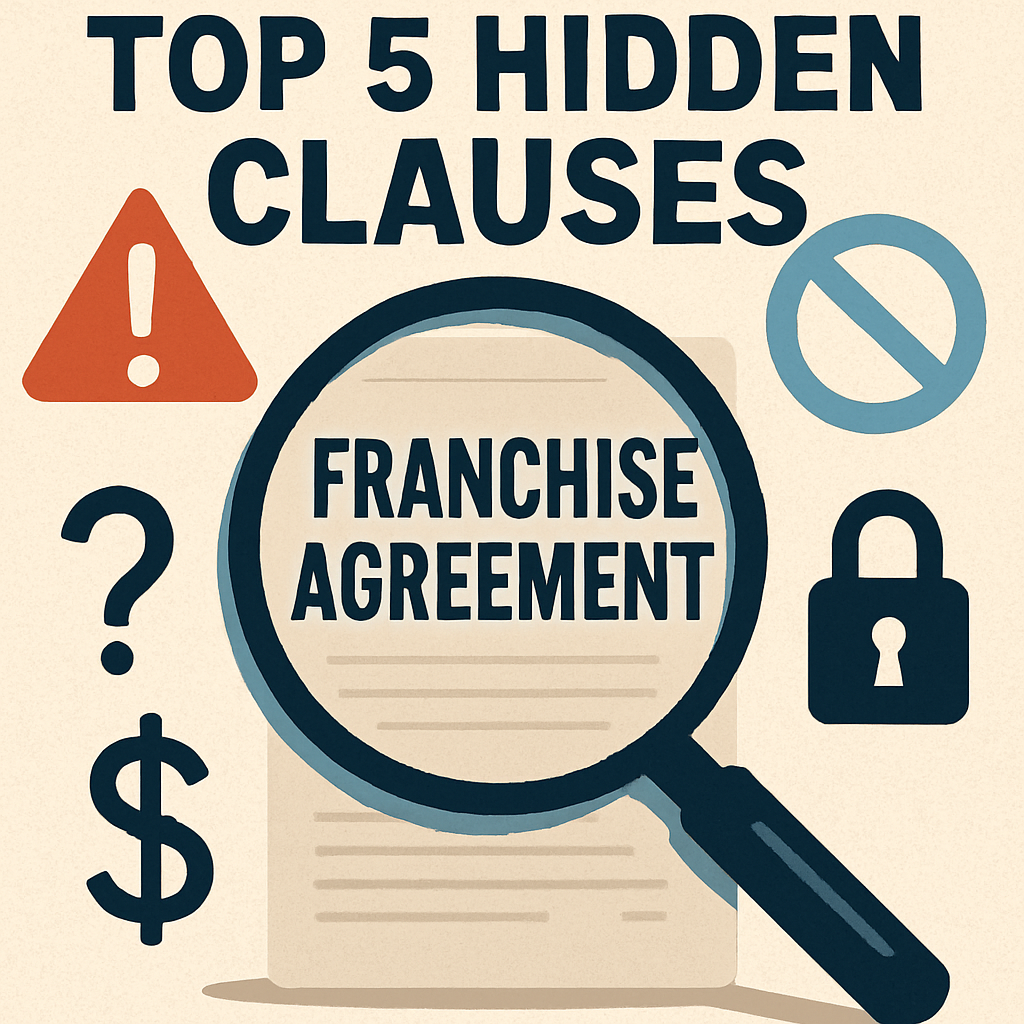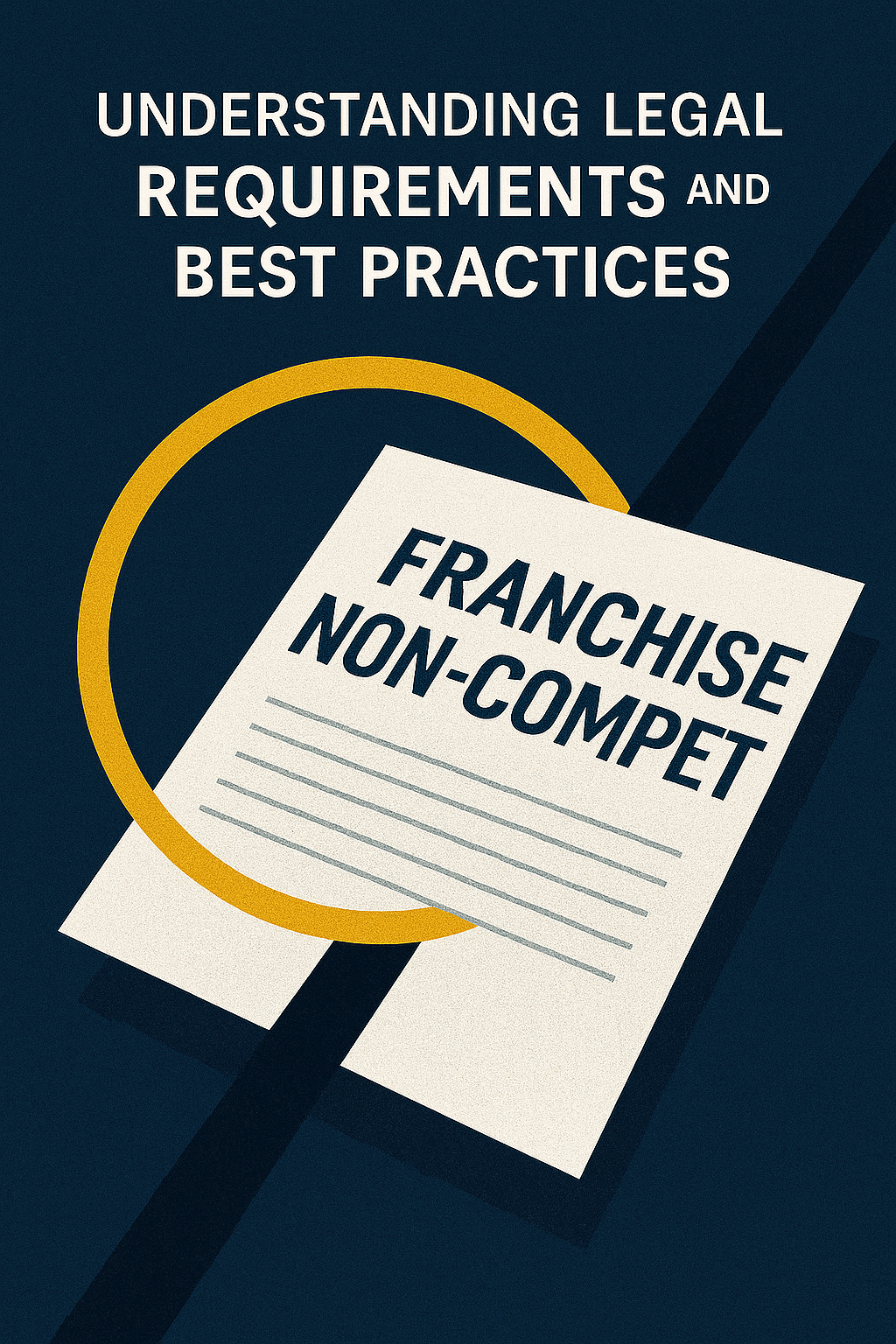Are you trying to decode Item 19 of an FDD? This essential part of the Franchise Disclosure Document offers potential financial performance data crucial to your investment decision. In our guide to understand Item 19 of an FDD, we’ll walk you through this section’s key elements, ensuring you’re well-equipped to dissect the figures and projections that could shape your franchise’s future. Short on fluff and rich in practical advice, expect to confidently assess the financial health of any franchise venture by the article’s end.
Key Takeaways
Item 19 in the Franchise Disclosure Document provides prospective franchisees with financial performance representations, reflecting the profitability of existing franchise units and is strictly regulated to ensure accuracy and legality.
Financial performance data in Item 19 includes various components such as the group measured, time period measured, number of outlets reported, and distinguishing characteristics that can significantly alter the financial outlook provided to franchisees.
Franchisors must comply with FTC regulations when disclosing financial performance, ensuring representations have a reasonable basis, and prospective franchisees are advised to analyze Item 19 diligently, often with the help of financial advisors, to make informed decisions.
Demystifying FDD Item 19: Financial Performance Representations

Wading through the waters of the Franchise Disclosure Document (FDD), one encounters the beacon of transparency: Item 19. This section of the FDD is where franchisors can provide a snapshot of potential profitability, offering a glimpse into the financial success of current franchisees. Such concrete evidence is pivotal, as it allows you to weigh the franchise system against competitors with a keen eye on financial assessment. However, tread carefully, for such representations are not mere boasts; they are bound by the strictures of legality, requiring franchisors to present financial performance data that is both accurate and permitted by law.
The data you’ll find here typically springs from the well of actual historical performance – a reflection of the revenue streams and insights that franchisors glean from their diligent tracking for royalty collections.
Key Components of Item 19

As you delve deeper into Item 19, you’ll discover various components that collectively paint a detailed picture of the franchise’s financial health. From historical financial data to key performance indicators, these components are the threads that weave together a tapestry of understanding.
Let’s unravel them to see the complete image.
Group Measured
When deciphering the group measured in Item 19, you’re essentially looking at the cross-section of outlets that make up the franchise’s financial backbone. It’s not just about individual performance but about the collective success of a combination of units. This average gross sales data gives you an aggregated view of what’s happening across the board, rather than isolated peaks or valleys.
Yet, caution is warranted. The geographical spread and the mix of company-owned versus franchised outlets might paint different pictures for different regions or operational models. It’s essential to discern whether the group measured aligns with your envisioned market and circumstances.
Time Period Measured
The time period measured in Item 19 is like a window to the franchise’s financial past. Typically, this spans the most recent full fiscal year, offering a fresh retrospective of the business’s performance. For a prospective franchisee, this historical financial data is a gold mine for trend analysis, allowing you to peer into the health and trajectory of the business over time.
Yet, this is no crystal ball; it is a mirror reflecting the actual records of the past year, providing a concrete foundation upon which to base your future income forecasts.
Number of Outlets Measured
The number of outlets measured stands as a testament to the breadth and depth of the financial performance data in Item 19. It’s not just about the total count; it’s about understanding which outlets contribute to the financial narrative being told. The ‘Number of Outlets Reporting’ metric sheds light on the franchise units whose performances have been included in the FDD, offering a clearer view of the franchise landscape.
If the financial performance representation is rooted in actual outlet performance, then past financial performance information, such as the count of outlets meeting or exceeding actual or potential sales, becomes a beacon for your potential financial performance expectations.
Distinguishing Characteristics
Distinguishing characteristics in Item 19 can be likened to the unique flavors that differentiate one coffee blend from another. Factors such as geographic location or the size of the outlet can significantly impact the financial data presented. Franchisors may choose to segment the financial performance representation, offering separate data for groups based on criteria like location or outlet type.
This means that the financial results of a downtown flagship store could differ markedly from those of a suburban satellite. For you, this signifies the importance of understanding the particular circumstances that have shaped the financial outcomes.
Legal Obligations and Regulations Governing Item 19
Navigating the legal seas of Item 19, franchisors must sail within the marked channels of FTC regulations. These rules serve as safeguards, ensuring that financial performance representations are anchored in actual historical data, devoid of speculative projections that could mislead the unwary. The concept of ‘reasonable basis’ is the keel that keeps the franchisor’s disclosures steady; they must not only be substantiated by written documentation but also prepared with utmost diligence to avoid the shoals of deception.
Should the franchisor venture into the waters of future performance projections, they are obliged to illuminate the assumptions and bases for these forecasts, equipping you with the lighthouse to navigate the possibilities independently. Especially for start-up franchisors, the absence of audited financial information or franchising experience can no longer be shrouded in fog; these must be disclosed, ensuring you know the full breadth of the franchisee’s future financial performance landscape before you.
Analyzing Item 19 Data: Making Informed Decisions

Armed with the financial data from Item 19, you, the prospective franchisee, must now transform into an analyst. Recognize that this data, often unaudited, is but a reflection of varied operational efficiencies across the franchise network. Profitability discrepancies can lurk beneath the surface even within the same model, and performance metrics like averages and medians must be approached with discernment. Franchisors may extend a helping hand, offering blank financial models to aid your forecasting efforts or industry benchmarks to gauge your potential. These tools, alongside the disclosed financial information, can help you calculate expected payback periods, assess the adequacy of salaries against local living costs, and evaluate the representation of fixed costs.
To chart these financial depths effectively, enlisting the expertise of financial advisors or consultants familiar with the franchise can prove invaluable.
When Franchisors Choose Not to Disclose Item 19

A franchisor’s choice to withhold Item 19 can stem from a myriad of reasons, from the inability to verify data to concerns about market competitiveness. Whether due to the newness of the franchise or industry-specific profitability challenges, the absence of Item 19 can cast long shadows on a franchise’s attractiveness. Potential franchisees might view the omission as a red flag, signaling either lower profitability or a lack of transparency—both of which can weigh heavily on the competitive scales against franchises that confidently disclose their financial performance representations.
For franchisors navigating these murky waters, starting a process of meticulous record-keeping to compile and eventually incorporate accurate financial data in future FDDs is a path towards regaining trust and competitive edge.
The Role of State Regulatory Agencies in Overseeing FPRs
At the helm of disclosure requirements for franchisors, the Federal Trade Commission (FTC) stands as the guardian of integrity. This state regulatory agency, along with appropriate state regulatory agencies, ensures that the financial performance representations provided are not only accurate but representative of the franchise’s true potential. As a franchisee, it’s within your rights to scrutinize disclaimers and demand written substantiation for the claims made.
This due diligence acts as your compass, guiding you through the legalities and veracities of financial representations.
Tips for Franchisees: Navigating Item 19 Due Diligence
Venturing into franchise ownership requires meticulous navigation of Item 19. As a prospective franchisee, take the helm and steer your due diligence with precision. Review the financial performance data thoroughly to grasp the detail it provides about the franchise. It’s your prerogative to request the raw data underlying these representations and to converse with existing franchisees to add color to the black-and-white figures.
Enlisting the expertise of legal and financial advisors is also a wise course of action, helping you analyze the disclosures and assess the financial state of the franchisor with an informed eye.
The Impact of Financial Performance Representations on Franchise Sales

As the tides of franchise sales ebb and flow, the financial performance representations in Item 19 can be a deciding current for prospective franchisees. These metrics and data are crucial navigational aids, enabling you to gauge the strength and promise of the franchise brand. However, the absence of such representations can erode trust, leaving prospective franchisees adrift with doubts about potential profitability and the franchisor’s transparency.
A franchisor’s inability to provide verifiable or consistent financial data can cast a shadow on the franchise sales process, while the range and detail of financial data disclosed—from gross sales to EBITDA—can either buoy or sink the franchise’s appeal. During franchise sales discussions, questions about revenue, profit margin, and earnings are not just idle curiosity but are as vital as the lighthouse beam to ships in the night.
Summary
As we draw the map to a close, the contours of FDD Item 19 should now stand out in bold relief. It’s a landscape that offers both a vista of opportunity and a terrain of diligence, where every financial figure and claim holds the potential to guide you towards a thriving franchise venture. Remember the pillars of analysis: scrutinize the group measured, understand the historical time frame, consider the number of outlets, and pay heed to distinguishing characteristics. Legal obligations and regulations are your safeguards, and the absence of financial representations a signal to probe deeper. Whether you’re a new entrant to the franchise world or a seasoned investor, let this essential guide be your compass, leading you to make informed and confident decisions in the dynamic seas of franchising.
Frequently Asked Questions
What is FDD Item 19 and why is it important?
FDD Item 19, or the Financial Performance Representations, is crucial as it provides potential franchisees with a clear view of the franchise’s financial performance and profitability, helping them make well-informed investment decisions.
Can franchisors include projections in Item 19?
Yes, franchisors can include projections in Item 19, but they must provide transparent disclosure of the basis and assumptions for these projections to prevent potential misleading claims.
What should I do if a franchisor does not disclose Item 19?
If a franchisor does not disclose Item 19, it’s important to investigate the reasons for this and assess its impact on the transparency and profitability of the franchise. You can also gather financial data from other sources or consult current franchisees for more information.
How does the absence of Item 19 affect a franchisor’s competitiveness?
The absence of Item 19, which provides financial performance representations, can signal to potential franchisees that the franchisor may have lower profitability or is withholding important financial information, creating a competitive disadvantage against franchises that provide these disclosures.
What role do state regulatory agencies like the FTC play in overseeing FPRs?
State regulatory agencies such as the FTC ensure the accuracy and substantiation of financial performance representations (FPRs) in Item 19, protecting potential franchisees’ interests.






